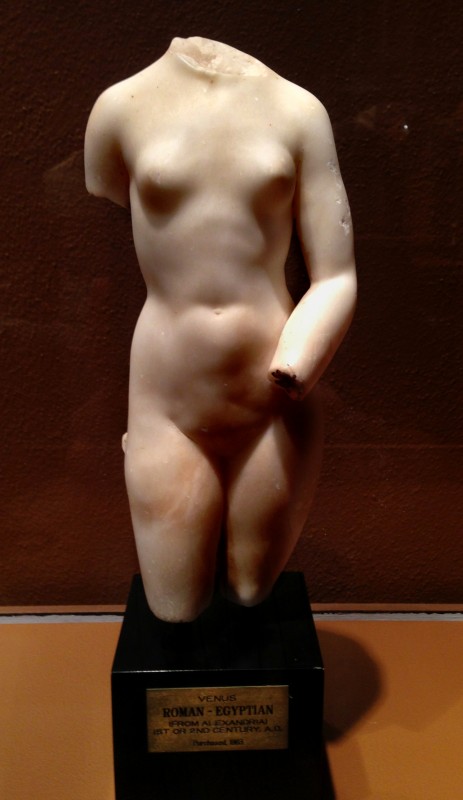Written by Kiani Ned, Curatorial Intern

Unknown Hellenistic sculptor of 1st-2nd Cent. A.D., Venus, 1st-2nd Cent. A.D.,white marble, 12 3/8 in., from Alexandria, Egpyt – “Passed & Checked” by Cairo Museum purchased, 1963, from the Carlsbach Gallery, N.Y.
In Greek and Roman mythology, Venus, known as “Aphrodite” in Greek, is the goddess of love, beauty, sex, fertility, and prosperity. Across history, poetry, and songs have been created and wars have been started in honor of her influence over human emotions and physical desires. For that reason, Venus is recognized as one of the oldest subjects in the history of sculpture. The goddess of love was a particularly popular subject for artists and sculptors in the Greco-Roman civilizations from c. 500 B.C. to c. 200 A.D. The sculpture of Venus that makes its home in the Museum’s galleries boasts a relaxed pose and a figure that is sensuously and softly modeled which is characteristic of classical sculpture in that it represents an “ideal” form. Classical sculptors sought to render bodies out of marble that were composites of the “best” features of the human body. In this case, the sculptor has created the ideal woman as decided by a theoretical scale of proportions central to classical sculptural theory. The method originates from Plato’s philosophy that each individual human, bird, tree, or object that occurs in nature is an imperfect manifestation of a perfect ideal of its kind, that is invisible to mortal eyes. The figure is rendered in the traditionally classic pose of contrapposto, which in Italian means “counterpose.” The Venus stands so that most of her weight is shifted to one side of the body while the shoulders and arms twist off-axis from the lower half of the body. The pose emphasizes the tension that is apparent in the human body when it assumes an upright position, but also symbolizes a psychological state of being–i.e. that of a state of ease. This alignment of the physical being and mental capacity is characteristic of classical interest in the human experience.


